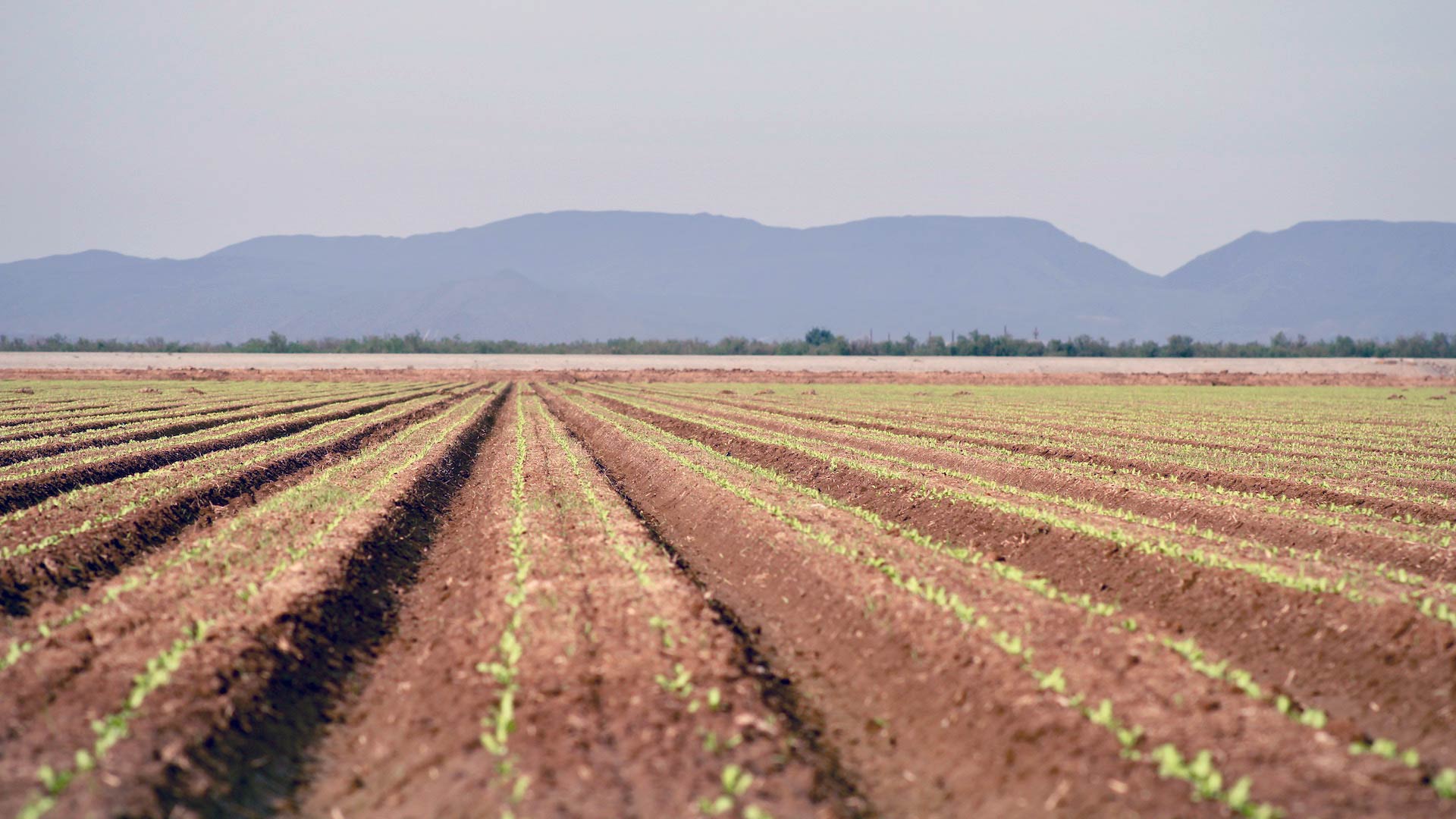 VIEW LARGER Romaine lettuce grows in neat rows on a farm in Yuma, Arizona. About 80% of the nation's wintertime vegetables come from the area.
VIEW LARGER Romaine lettuce grows in neat rows on a farm in Yuma, Arizona. About 80% of the nation's wintertime vegetables come from the area. The average American farmer was 58 years old the last time the U.S. Department of Agriculture checked.
As food producers age, the number of farms is shrinking. For younger growers, land to get started on is increasingly scarce. Many gravitate toward organic and sustainable farming, where competition and costs are also obstacles.
There were just over 1.9 million farms nationwide in 2022, according to the USDA’s 2022 census – down 315,000 over the last quarter-century and by 141,733, or 7%, in just the last five years.
In that same 5-year span, 20 million acres of farmland went out of production, almost 10% of the total. In Arizona, the number of farms dropped by 2,376, according to the Arizona Farm Bureau. That’s a loss of about 600,000 acres – almost twice the size of Phoenix.
Despite this loss of land, the nation’s number of beginning farmers, those who have farmed for 10 or fewer years, has increased to over 1 million in 2022, an 11% increase since 2017.
“Particularly in Arizona, we see farmland converting to subdivisions, to commercial properties on a pretty regular basis. So, just the amount of land available is a challenge,” said Chad Smith, director of government relations for the Arizona Farm Bureau.
Finding a market for their goods is another obstacle for smaller farmers and those just starting out, no matter how high quality their crops or livestock.
“When we first started, I grew things pretty well the first year, but we didn’t really have a market for us to sell everything we were growing,” said Jhonny Flores, co-owner of the Coldwater Co-op farm, a small farm-to-table operation in Avondale.
Larger corporate farms generally outcompete smaller operations.
“If I buy from a national supplier, I’ll know that they are going to sell me broccoli year round.… I’ll always be able to get what I need from them, whereas if you have got a few acres, you’re going to have something at a certain time of year and not at the rest of the time of the year,” said Paul Brierley, director of the Arizona Department of Agriculture.
Price is another issue, and corporate farms can almost always sell for less. Consumers typically say they prefer higher quality, locally sourced food. In practice, they often shop on price.
“They buy whatever’s cheapest on the shelf. So that’s a challenge, too – how do you actually get people to pay a premium… when there’s other options on the shelf that are cheaper?” said Brierley.
The USDA offers aid programs to farmers at different career stages and with farms of all sizes.
One is the Resilient Food Systems Infrastructure Program, which provides grants to small farms to “provide more and better markets to small farms and food businesses.”
Approximately $3.2 million in grants from that program go to farms in Arizona for equipment, supplies and personnel costs.
The program expands the capacity of those who participate by providing aid within the manufacturing, transportation, storage and distribution processes.
Avrile Remy, owner of Shamba AZ, an urban microgreen farm in north Phoenix, made her first commercial sale in August 2022 thanks to the Local Food Purchase Assistance Cooperative Agreement Program.
Through that program, started in 2021, USDA provides funds to the Arizona Food Bank Network and other community groups that use them to make purchases from local farmers.
“My very first dollar that I actually earned commercially has been that way,” said Remy, calling the program “super helpful. I mean, that’s what kind of gave me the confidence and the start that I needed to push forward.”
With nearly two years of experience in commercial farming, Remy said her confidence is growing that she can make a go of it.
“I feel like there is a community of people who want to support small growers, and if it’s available and if they know how to get it, will pick us over the supermarket every time,” she said.

By submitting your comments, you hereby give AZPM the right to post your comments and potentially use them in any other form of media operated by this institution.